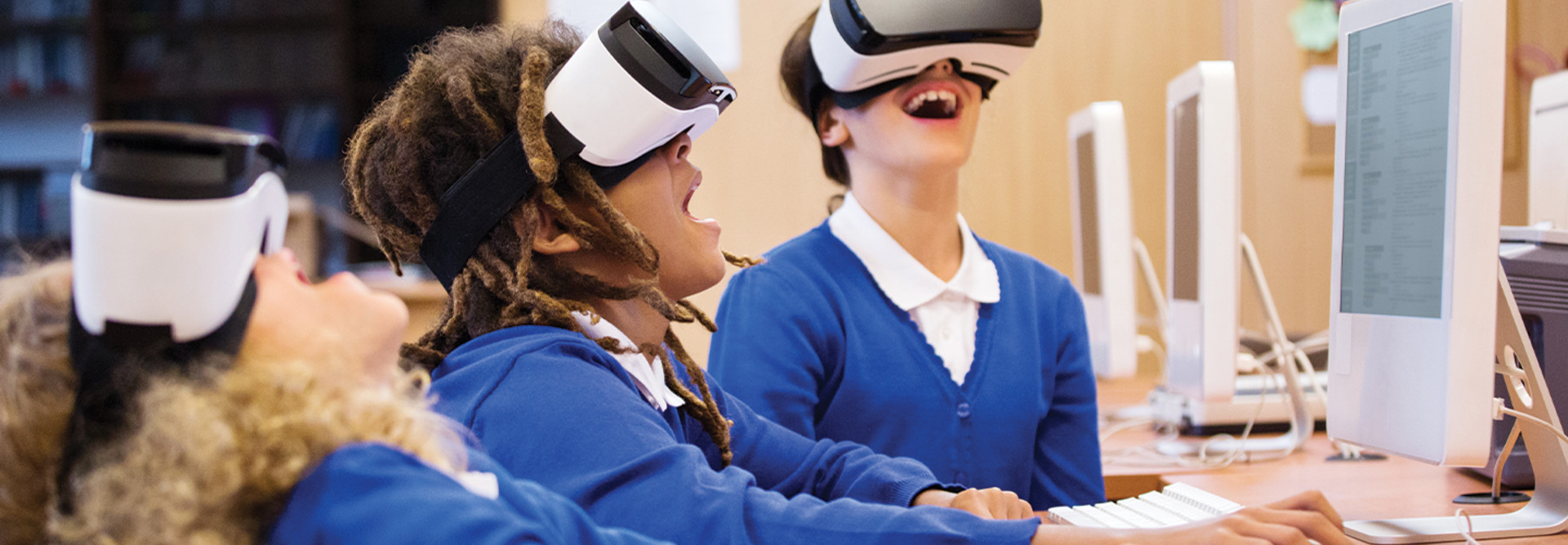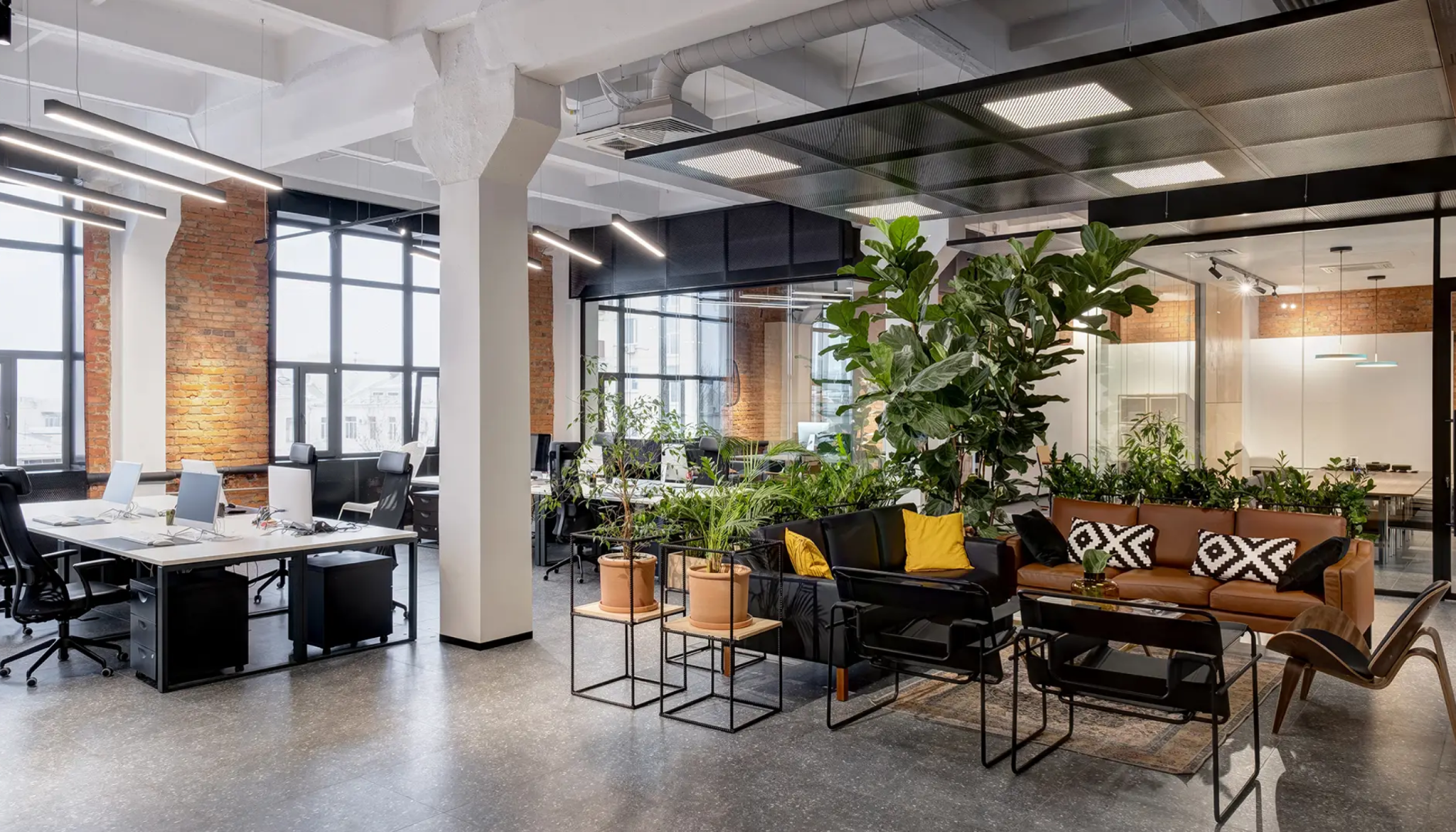Ed Tech Blog

If you have ever wanted to take your students back in time to show them that history is as interesting as you tell them, then you need to learn more about using Virtual Reality (VR) technology in the classroom. This post will take you through everything you need to know before you start buying VR supplies. We will start with the differences between Augmented Reality (AR) and VR, the benefits of VR, and how it can help your students learn more.
A general rule in learning is that students remember 20% of what they hear, 30% of what they see, and 50% of what they both see and hear. They remember 80% of the things they experience personally. To take advantage of this level of remembrance, you need to utilize VR and AR technology because it is one of the only ways to give the students a personal experience in the classroom.
What is the difference between AR and VR anyway? They are two new technologies shaking up the world of education. AR is software that projects a layer on the surroundings of the user. The software can project parts of the surroundings, project an object, and much more but the projection only appears on the screen. On the other hand, VR is a wholly digital environment surrounding the user. The user can see and interact with the new surroundings. In short, VR feels much more real than AR, and it is the perfect immersive experience that students need.
VR provides a level of immersion that is second to none. Students can immerse themselves completely in the subject of their surroundings. The types of surroundings are only limited by the imagination of the one creating them. There is nothing more immersive than going back in time.
If you are a history...
Read more: Show your Students the World using Virtual Reality

Incorporating surveys into the classroom could bring valuable feedback, especially about the way you teach. Understand that your students can give valuable insight as well. Since they experience your teaching firsthand, they can provide the most honest and valuable feedback compared to anyone else.
It can be instrumental in improving your teaching style. Moreover, it can foster a healthier and friendlier relationship between you and your students. Here’s how you can make that possible through surveys.
Why Incorporate Surveys Into the Classroom?
Instead of asking questions about your teaching quality individually, you can hand out surveys with qualitative questions. Besides, your students will feel free to state their opinions and offer feedback to sound more honest when no one is watching or listening directly to their answers.
By making it clear that there is no pressure on them, they can share their opinion honestly. And we intend to help you receive said feedback. Keep reading to check out a few tips on incorporating surveys into the classroom.
Benefits of Incorporating Surveys Into the Classroom
Incorporating surveys into the classroom offers many benefits. It brings a lot of engagement for students as they assess their learning experience, course content, etc.
Furthermore,
Read more: A Simple Guide to Incorporating Surveys into the Classroom
/cdn.vox-cdn.com/uploads/chorus_asset/file/13100641/akrales_180913_2950_0146.jpg)
Even before the pandemic forced students to the screen for educational instruction, both parents and teachers began questioning the right amount of screen time for their children. The concerns for too much screen time circulating among parent and teacher bodies mainly point back to both physical and mental health. A 2020 Pew Research report, “Parenting in the Age of Screens” confirms the alarm stating, “Fully 71% of parents of a child under the age of 12 say they are at least somewhat concerned their child might ever spend too much time in front of screens, including 31% who are very concerned about this.”
Undoubtedly, the pandemic catapulted students into a screen-time-saturated world, further amplifying the worry around too much screen time. Screens became the gateway for socialization, activities, and, of course, education.
Educators began harnessing technology in new and unfamiliar ways to engage students on the screen. From becoming fluent in screencasting, to designing engaging asynchronous formative assessments, teachers began using technology as a powerful tool for instruction. Additionally, the pandemic improved the bridge to student access in many districts who may have struggled before. Most schools moved to 1:1 models making access to devices ubiquitous.
As in-person learning resumed...
Read more: A Balanced Approach on Screen Time in the Classroom

In recent years, the use of educational technology in physical education (PE) has been widely promoted across all levels of academic institutions with research budgets also being driven into the intersection between PE and tech, tellingly with the establishment and publication of the National Education Technology Standards for teachers. With the increase in attention around the use of tech in PE, there emerges a phenomenal opportunity for educators and students to reap the benefits of innovation in an environment that is yet to be maximized. It should be noted that the desire to use technology is not necessarily a new one; the use of pedometers and heart rate monitors has occurred for many years, but the introduction of technology described as ‘smart’ is where the headroom for innovation in PE truly lies. But with any emerging technology, there is initial uncertainty as to whether the tech provides a gateway to the future of its teaching, or whether it is a passing fad that is not delivering on its promise (think 3-D glasses). On top of the risk for educators in investing and adopting a technology with a short lifetime relevance, there is also the uncertainty that the benefits of using...
Read more: Technology in Physical Education: How to Deliver on Its Potential

In today's fast-paced business world, the dynamics of meetings have evolved significantly. Gone are the days of bland, uninspiring conference rooms where creativity goes to die. Modern organizations understand the importance of fostering creativity, collaboration, and productivity through well-designed meeting spaces. Whether it's a brainstorming session, a client presentation, or a team meeting, the environment in which these interactions take place can have a profound impact on outcomes. With that in mind, let's explore some innovative and modern designs that are transforming meeting spaces into hubs of inspiration and productivity.
Flexible Furniture Arrangements
Traditional boardroom setups with fixed tables and chairs are becoming obsolete. Modern meeting spaces embrace flexibility, allowing furniture arrangements to be easily reconfigured based on the purpose of the meeting. Mobile tables, modular seating, and adjustable desks enable teams to adapt the space to suit different collaboration styles and group sizes.
Technology Integration
Seamless integration of technology is crucial in modern meeting spaces. From interactive whiteboards and video conferencing systems to wireless screen-sharing capabilities, technology should enhance collaboration rather than hinder it. Incorporating smart devices can streamline workflows and foster more efficient communication among team members.
Biophilic Design Elements
Incorporating elements of nature into meeting spaces can...
Read more: Elevating Meeting Spaces: Exploring Modern Designs for Productive Collaboration

In today's rapidly evolving digital landscape, the integration of artificial intelligence into various industries has become more than just a trend; it's a necessity for staying competitive and innovative. Among the areas where AI is making significant strides is the creative process. Traditionally, creativity has been viewed as a uniquely human trait, but with advancements in AI technology, we're witnessing a paradigm shift where machines are becoming valuable collaborators in the creative journey.
From generating ideas to streamlining workflows, AI is revolutionizing the way creative professionals work. Let's explore some key ways in which AI is being integrated into the creative process and how it's reshaping the future of design.
Idea Generation
One of the most exciting applications of AI in the creative process is its ability to assist with idea generation. AI algorithms can analyze vast amounts of data, identify patterns, and generate novel concepts based on predefined criteria. For example, in graphic design, AI-powered tools can suggest color palettes, typography, and layout options, helping designers overcome creative blocks and explore new directions.
Content Creation
AI is increasingly being used to automate repetitive tasks in content creation. Natural Language Processing algorithms can generate written content that mimics human style...
Read more: Designing for Tomorrow: Integrating AI into the Creative Process
